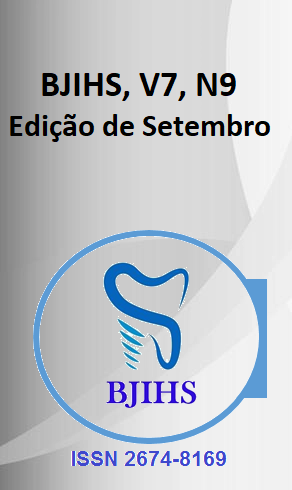Resumo
El astrocitoma espinal es un tumor raro del sistema nervioso central que se origina en las células astrocíticas de la médula espinal. Aunque representan entre el 5-10% de los tumores primarios espinales, su diagnóstico y tratamiento continúan siendo desafiantes debido a su heterogeneidad clínica y radiológica. El objetivo de esta revisión es explorar los avances más recientes en el diagnóstico, tratamiento y pronóstico de los astrocitomas espinales, con énfasis en las terapias emergentes y su impacto en la calidad de vida de los pacientes.
La metodología seguida fue una revisión narrativa de la literatura científica publicada entre 2019 y 2025, obtenida a través de la base de datos PubMed. Los estudios seleccionados abordaron temas clave como las técnicas de imagen para el diagnóstico, las opciones terapéuticas (quirúrgicas, radioterápicas y quimioterápicas), y los tratamientos emergentes, como la terapia molecular y génica. Se llevó a cabo un análisis cualitativo para identificar las tendencias actuales y las áreas que requieren más investigación. Los resultados revelaron que la resonancia magnética (RM) sigue siendo la herramienta principal para el diagnóstico, mientras que la cirugía es el tratamiento más utilizado, especialmente en astrocitomas de bajo grado. La radioterapia y la quimioterapia son fundamentales en tumores de alto grado, y las terapias moleculares y génicas están ganando relevancia en el tratamiento de tumores recurrentes o resistentes. En conclusión, aunque ha habido avances significativos, el diagnóstico temprano y el tratamiento efectivo siguen siendo desafíos importantes. La investigación futura en terapias personalizadas y técnicas de imagen avanzadas será crucial para mejorar los resultados en los pacientes con astrocitomas espinales.
Referências
Bender K, Perez E, Chirica M, Onken J, Kahn J, Brenner W, et al. High-grade astrocytoma with piloid features (HGAP): the Charité experience with a new central nervous system tumor entity. J Neurooncol [Internet]. 2021;153(1):109-20. Disponible en: https://www.ncbi.nlm.nih.gov/pmc/articles/PMC8131327/
Biczok A, Strübing FL, Eder JM, Egensperger R, Schnell O, Zausinger S, et al. Molecular diagnostics helps to identify distinct subgroups of spinal astrocytomas. Acta Neuropathol Commun [Internet]. 30 de junio de 2021;9:119. Disponible en: https://www.ncbi.nlm.nih.gov/pmc/articles/PMC8244211/
Métais A, Bouchoucha Y, Kergrohen T, Dangouloff-Ros V, Maynadier X, Ajlil Y, et al. Pediatric spinal pilocytic astrocytomas form a distinct epigenetic subclass from pilocytic astrocytomas of other locations and diffuse leptomeningeal glioneuronal tumours. Acta Neuropathol [Internet]. 2023;145(1):83-95. Disponible en: https://www.ncbi.nlm.nih.gov/pmc/articles/PMC9582396/
Zhao Z, Song Z, Wang Z, Zhang F, Ding Z, Fan T. Advances in Molecular Pathology, Diagnosis and Treatment of Spinal Cord Astrocytomas. Technol Cancer Res Treat [Internet]. 23 de julio de 2024;23:15330338241262483. Disponible en: https://www.ncbi.nlm.nih.gov/pmc/articles/PMC11271101/
Li Y, Zheng Z, He Q. Individualized Prediction of Overall Survival Time for Patients with Primary Intramedullary Spinal Cord Astrocytoma: A Population-Based Study. World Neurosurgery [Internet]. 1 de enero de 2025;193:1106-16. Disponible en: https://www.sciencedirect.com/science/article/pii/S1878875024017960
Butenschoen VM, Hubertus V, Janssen IK, Onken J, Wipplinger C, Mende KC, et al. Surgical treatment and neurological outcome of infiltrating intramedullary astrocytoma WHO II–IV: a multicenter retrospective case series. J Neurooncol [Internet]. 2021;151(2):181-91. Disponible en: https://www.ncbi.nlm.nih.gov/pmc/articles/PMC7875841/
Caruso JP, Shi C, Rail B, Aoun SG, Bagley CA. Aggressively recurring cervical intramedullary anaplastic astrocytoma in a pregnant patient. Surg Neurol Int [Internet]. 13 de septiembre de 2021;12:466. Disponible en: https://www.ncbi.nlm.nih.gov/pmc/articles/PMC8492418/
Daffini L, Pagani F, Cominelli M, Lodoli G, Tironi A, Poliani PL. Leptomeningeal dissemination of anaplastic medullary cone astrocytoma: an unexpected findings in a patient with leptomeningeal enhancement and clinical history of multiple myeloma. Pathologica [Internet]. 1 de septiembre de 2021;113(4):294-9. Disponible en: https://www.ncbi.nlm.nih.gov/pmc/articles/PMC8488982/
Singh AK, Sheikh AI, Pandey TK, Chabbra DK. Congenital Mobile Atlantoaxial Dislocation with Cervicomedullary Astrocytoma in Pediatric Patient. Neurol India. 2021;69(1):194-7.
Henriksen OM, Hansen AE, Muhic A, Marner L, Madsen K, Møller S, et al. Diagnostic yield of simultaneous dynamic contrast-enhanced magnetic resonance perfusion measurements and [18F]FET PET in patients with suspected recurrent anaplastic astrocytoma and glioblastoma. Eur J Nucl Med Mol Imaging. noviembre de 2022;49(13):4677-91.
Kurokawa R, Umemura Y, Capizzano A, Kurokawa M, Baba A, Holmes A, et al. Dynamic susceptibility contrast and diffusion-weighted MRI in posterior fossa pilocytic astrocytoma and medulloblastoma. J Neuroimaging. mayo de 2022;32(3):511-20.
Sun T, Wang Y, Liu X, Li Z, Zhang J, Lu J, et al. Deep learning based on preoperative magnetic resonance (MR) images improves the predictive power of survival models in primary spinal cord astrocytomas. Neuro Oncol. 2 de junio de 2023;25(6):1157-65.
Liu Y, Chen H, Li G, Zhang J, Yao K, Wu C, et al. Radiotherapy delays malignant transformation and prolongs survival in patients with IDH-mutant gliomas. Cancer Biol Med. 1 de noviembre de 2022;19(10):1477-86.
Han X, Zhou H, Sun W, Hou L, Wang Y, Wang H, et al. IDH1R132H mutation increases radiotherapy efficacy and a 4-gene radiotherapy-related signature of WHO grade 4 gliomas. Sci Rep. 11 de noviembre de 2023;13(1):19659.
Esteyrie V, Dehais C, Martin E, Carpentier C, Uro-Coste E, Figarella-Branger D, et al. Radiotherapy Plus Procarbazine, Lomustine, and Vincristine Versus Radiotherapy Plus Temozolomide for IDH-Mutant Anaplastic Astrocytoma: A Retrospective Multicenter Analysis of the French POLA Cohort. Oncologist. mayo de 2021;26(5):e838-46.
Kamel R, Van den Berge D. Radiotherapy for subependymal giant cell astrocytoma: time to challenge a historical ban? A case report and review of the literature. J Med Case Rep. 20 de julio de 2024;18(1):330.

Este trabalho está licenciado sob uma licença Creative Commons Attribution 4.0 International License.
Copyright (c) 2025 Katiuska Elizabeth Vera Delgado

